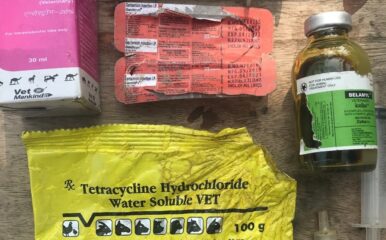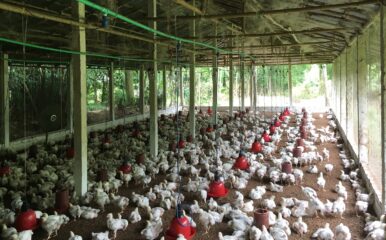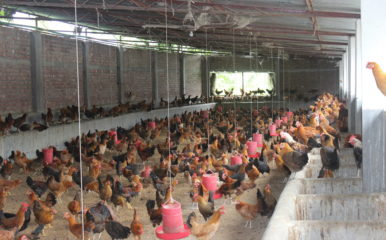
Bird flu resurfaces in India
Published on 23/02/2021
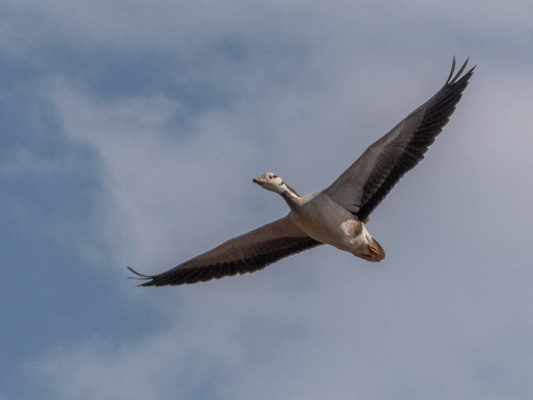
Mike Prince CC BY 2.0
Frequent occurrences of avian influenza (bird flu) cause high levels of bird deaths and illness in India’s fast-growing poultry industry and lead to economic losses as it affects markets and exports of avian products and sub-products are halted.
The impacts don’t end there. Disease outbreaks can threaten biodiversity by causing high levels of illness and death in endangered species. Moreover, there are serious zoonotic risks associated with mutation of the virus and transmission to people.
Given the present experience of the COVID-19 pandemic, any viral outbreak must be handled with utmost care.
It is almost exactly 15 years since India first notified its first outbreak of avian influenza, on 18 February 2006, and many Indian states have since been affected with avian influenza outbreaks of the virus H5N1. In the past few years, bird flu has continued to pose a threat to India in the early spring.
Most recently, and only a few months following a post-operation surveillance plan (POSP) saw the country declared free from the virus, avian influenza was found in wild birds in Uttarakhand, Gujaratand Maharashtra. To date, the country has experienced around 30 episodes of the disease – with 12 states confirming for bird flu in crows or migratory or wild birds, including Gujarat, where the One Health Poultry Hub is working.
High and low pathogenicity
Avian influenza viruses are broadly classified as low pathogenic (LPAIV) and high pathogenic (HPAIV), based on their ability to cause disease (pathogenicity). LPAIV are found worldwide and recovered frequently from clinically normal shorebirds and migrating waterfowl. In the past, LPAIV circulated mainly among wild birds, with only rare transmission to poultry, but the scenario has changed.
Now, the low pathogenic virus strain H9N2 and high pathogenic strain H5N1 are endemic in poultry in several countries, with an increasing number of variants.
In addition, while once the spread of LPAIV from water birds and its conversion to HPAIV and circulation in poultry was an occasional event, now HPAIV is being circulated among poultry.
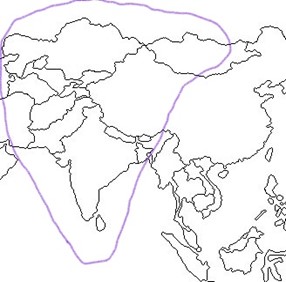 As wild birds belonging to the orders Anseriformes and Charadriiformes are natural reservoirs of the viruses and migratory birds can ‘import’ the virus, occurrence of avian influenza is hard to control. Most of the world’s bird flu cases are along the migratory route known as the Central Asian Flyway (right), which covers almost of the Indian subcontinent.
As wild birds belonging to the orders Anseriformes and Charadriiformes are natural reservoirs of the viruses and migratory birds can ‘import’ the virus, occurrence of avian influenza is hard to control. Most of the world’s bird flu cases are along the migratory route known as the Central Asian Flyway (right), which covers almost of the Indian subcontinent.
Virus spread
But two ‘man-made’ reasons may also be contributing to the spread. First, climate change. It is evident even within Gujarat state that migratory birds have changed their path as a result of climate effects.
Second, the growth in poultry farming under poor sanitary conditions has been sustaining the virus. This is especially so when multiple susceptible species live in the same area.
Avian influenza A virus has relatively restricted ability to replicate in humans, and there have been only sporadic incidences of H5N1 reported worldwide since 1997 when the first instance of humans contracting this strain from birds was reported in China. However, no human cases have been recorded in India so far.
But the worrisome scenario scientists are predicting is HPAIV circulating in poultry being regularly spread to water birds, circulated and spread back to poultry. There is evidence that an H5N1 (high pathogenic) virus is acquiring an ability to cross the species barrier.
Virus containment
There is a clear difficulty in eradicating influenza viruses given their persistence in a vast reservoir of aquatic birds. However, the spread of bird flu can be contained. Monitoring and surveillance, in the event of an outbreak, and a strategy for stamping out and restricting the movements of domestic birds from affected areas have been effective. India’s national action plan, updated for 2021, covers preparedness, control and containment of avian influenza in animal husbandry and can be referred for detail information.
It is also important to study the genome of virus samples to track the virus’s evolution. The Department of Animal Husbandry and Dairying of the Government of India has set up a control room in New Delhi to keep watch on the situation and to take stock daily of preventive and control measures undertaken by State authorities in the wake of the recent outbreak.
Biosecurity
Containment measures though have a severe impact on farmers. India exports processed poultry products such as egg powder, yolk powder and chicken products, as well as pharmaceutical ingredients from the poultry sector worth hundreds of crores every year. Poultry sales are already taking a hit with the latest outbreaks.
The good news is that it is safe to consume poultry meat and eggs. According to the World Health Organization (WHO) there is no epidemiological data which suggests that the disease can be transmitted to people through cooked poultry and eggs – even if the bird was contaminated with the virus before cooking. The virus is heat sensitive and the pathogen cannot survive above 70C. Care though must be taken while handling and processing raw chicken meat.
Likewise, poultry farmers need to take care. They can help to save their birds and guard against economic loss by imposing strict biosecurity measures to reduce contamination, including being meticulous with cleansing and disinfecting procedures, reducing people’s movements in farm bird areas and reducing contact between captive and wild birds.

